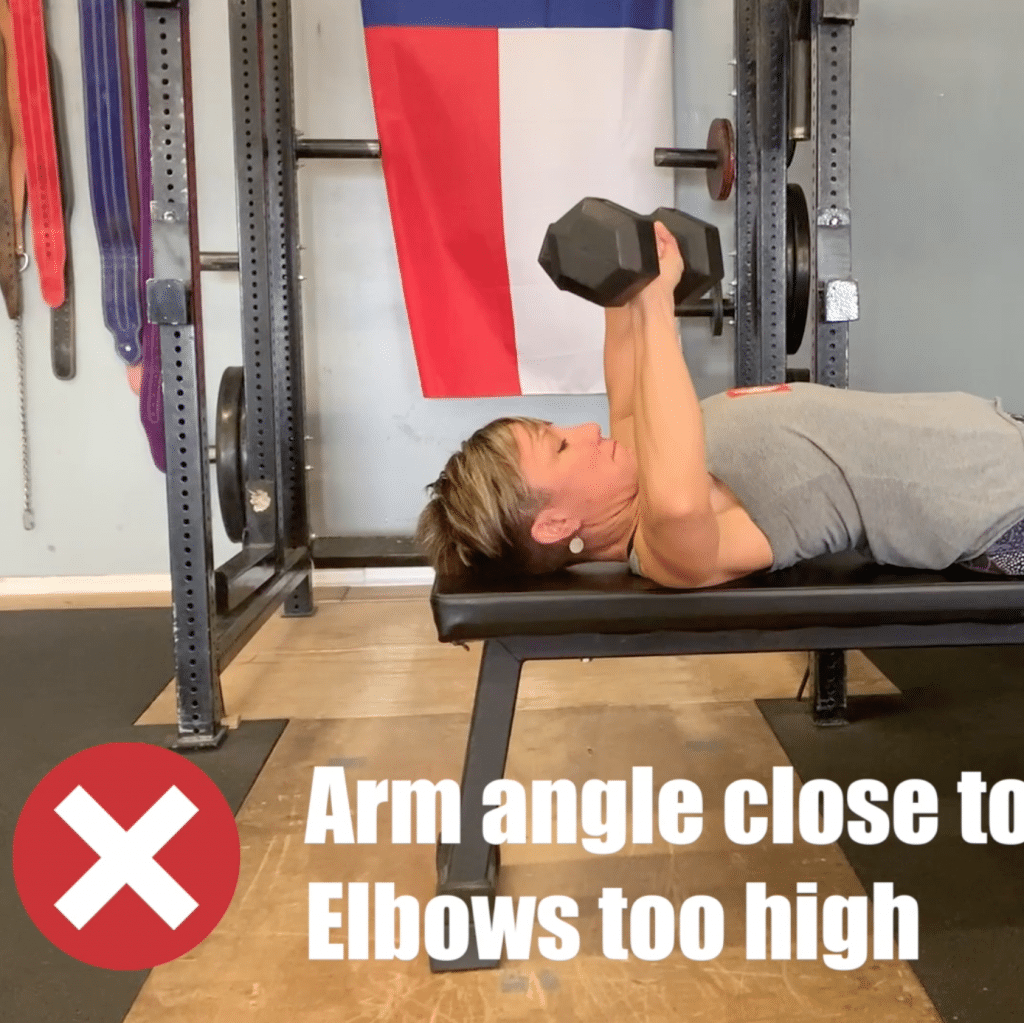Flat dumbbell press has always been a gym favorite, and for good reason:
- It’s a great way to increase muscle size and strength
- Unlike barbell bench press, it forces you to stabilize the load (since it’s a unilateral exercise)
- It allows you to rotate your arms/shoulders, so for a lot of you, this means you can press without discomfort or pain
So if it’s not in your program, it probably should be… and if it is, you need to be doing it correctly.
Avoid these common mistakes, and you’re golden.
1. RELAXING TORSO AND LOWER BODY
Treat this just like you would a barbell bench press - as a whole body movement!
- Maintain 5 points of contact (drive both feet into the floor, keep your head, butt, shoulders on at the bench at all times)
- Squeeze your glutes and drive your knees out while pushing into the floor
- Pack your shoulders (so squeeze scapula down and back)
- Drive your chest up
- Brace your core (this means fill your lungs and make your stomach as hard as possible - this doesn’t mean suck your stomach in)
2. ELBOW ANGLE TOO SMALL
Forearm should be close to vertical throughout the entire movement
- Initiate the movement by slowly pulling your elbows away from your body
- As you lower the weight, make sure your forearms stay perpendicular to floor
- With heavier weights, the dumbbell will make contact with your torso (assuming a full range of motion). With lighter weights, this is not necessarily true. Don’t compromise your arm angle in order to your touch chest!
3. FLARING ELBOWS
As the weight gets heavier, it’s common for the elbows to flare out (get closer to a 90 degree angle)
- Arm angle should be somewhere between 45-60 degrees
- Focus on keeping your shoulders packed (so squeezing your scapula down and back) and keep driving your chest up - in other words, don’t relax in the bottom
- Lower the weights in a slow and controlled manner - even experienced lifters will get out of position when moving weights too quickly


